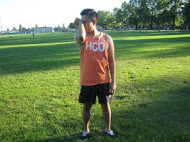A skull fracture involves any skull or head injury that results to the fracture of the skull bones. It is considered as a prevalent injury affecting both adults and children and often linked with a head injury. There are instances in which it can potentially result to disability or even death.
What are the possible causes?
A skull fracture can be caused by various factors that involves a direct blow or strike to the head.
It might be due to the following factors:
- Engaging in rough or contact sports
- Fall injuries where the head is damaged
- Assault during street fights or domestic violence
- Vehicular accidents
- Work-related accidents
- Injuries when heavy objects fall on an unprotected head
What are the indications?
The usual signs of a skull fracture are based on the seriousness of the injury and might include the following:
- Localized swelling with or without evident bruising
- Nausea and/or vomiting
Bruising or discoloration under the eyes or behind the ears. - Lacerations
- Bruising or discoloration under the eyes or behind the ears
- Intense headaches
- Minor to severe bleeding that can occur from the ears or nose
- Inability to move the head or neck
- Speech disturbances
- Drainage of clear fluid from the ears or nose
- Confusion
- Feeling drowsy and loss of balance
- Erratic heartbeat or weak pulse
- Difficulty breathing
- Difficulty using the legs or arms
- Impaired sensations that might include hearing, vision, smell and/or taste
- Seizures
- Loss of consciousness
Management of a skull fracture
For a minor case of trauma to the head, the following must be done:
- Place an ice pack covered with a towel or cloth on the affected site
- Check for any signs of bleeding
- Make sure that the individual can breathe normally
- Assess for any injuries in other parts of the body
If the individual sustained severe trauma, it is vital to call for emergency assistance if any of the following are present:
- Intense headache and/or serious bleeding
- Drainage of clear fluid from the ears or nose
- Discoloration or bruising beneath the eyes or behind the ears
- Confusion
- Speech disruptions
- Erratic heart rate
- Balance loss
- Difficulty breathing
- Difficulty using the legs or arms
- Unequal pupil size
- Seizures
- Impaired sensations with hearing, vision, smell and taste
- Loss of consciousness
Other measures that must be done for an individual with a severe case of trauma include the following:
- If the individual ceases to breathe, perform CPR right away.
- Immobilize the individual and stay with him/her.
- Keep the head, neck and body aligned to avoid worsening any possible spinal injury.
- If the individual is vomiting, do not turn only the head but move the head along with the neck and entire body to one side.
- Do not attempt to remove a helmet if a head injury is suspected.
Disclaimer / More Information
The information posted on this page on a skull fracture is for learning and educational purposes only. To learn how the injury is managed, register for first aid training at one of our training centers located throughout Canada. The training centers are in Edmonton, Calgary, Vancouver, Kelowna, Saskatoon, Victoria, Surrey, Mississauga, Winnipeg, Red Deer, Toronto, Ottawa and Halifax.

